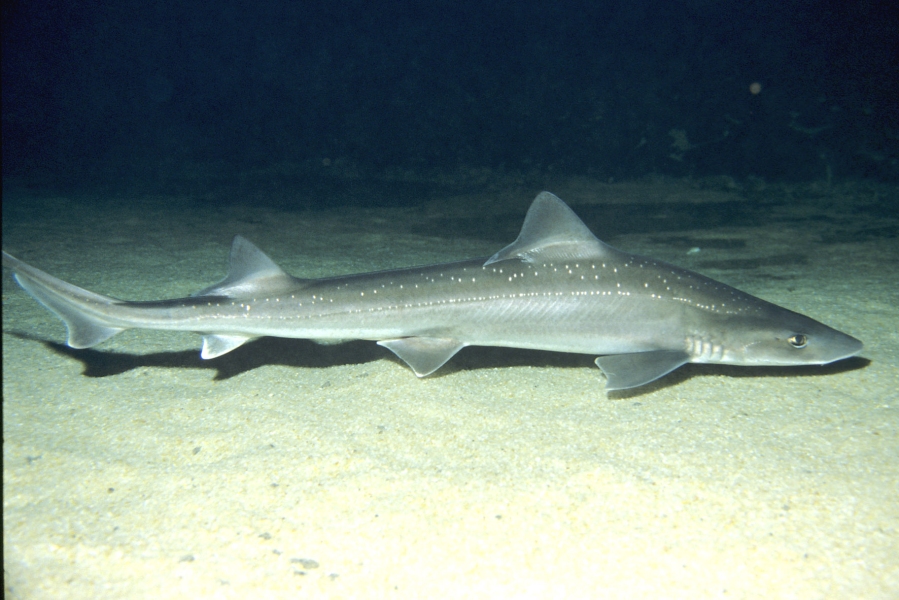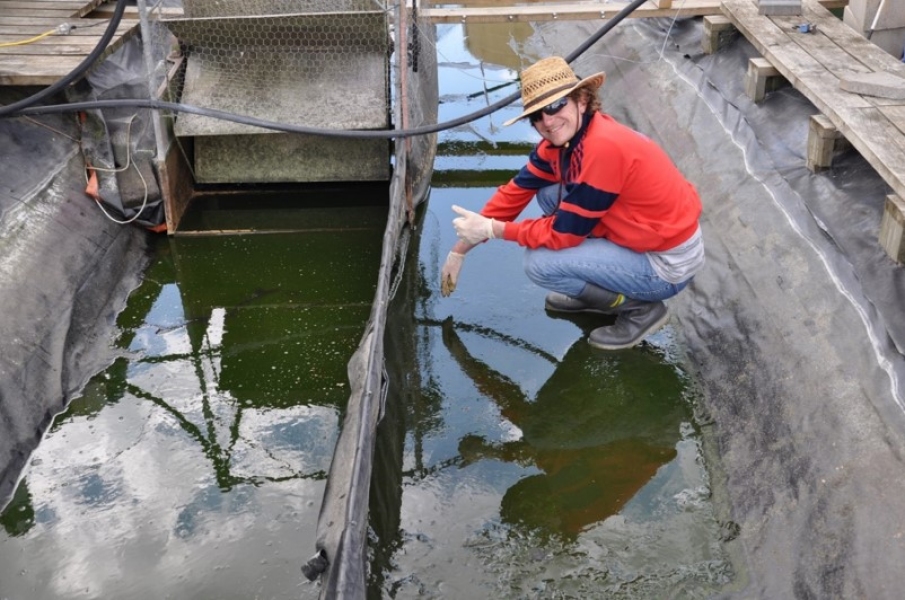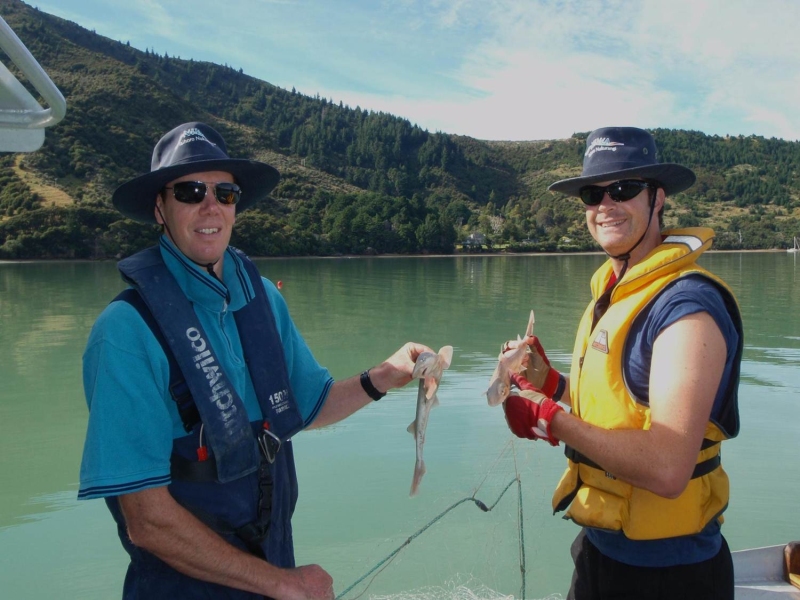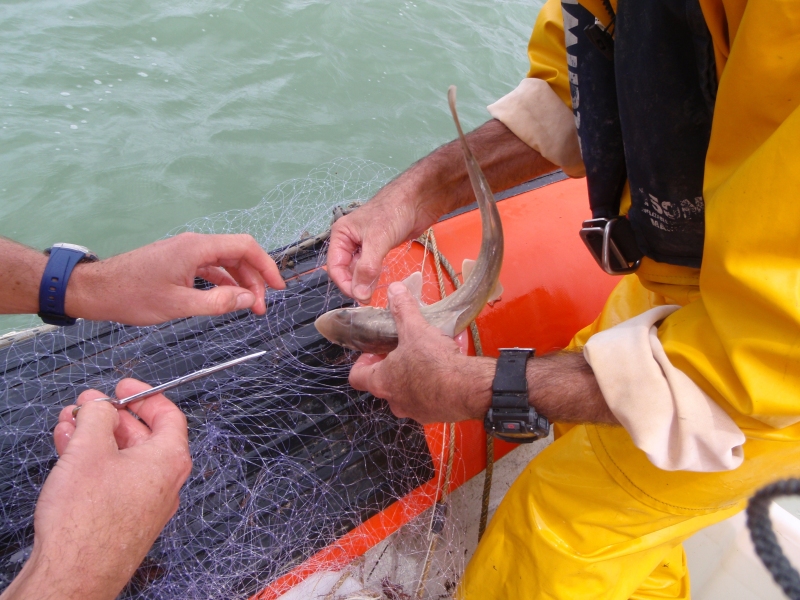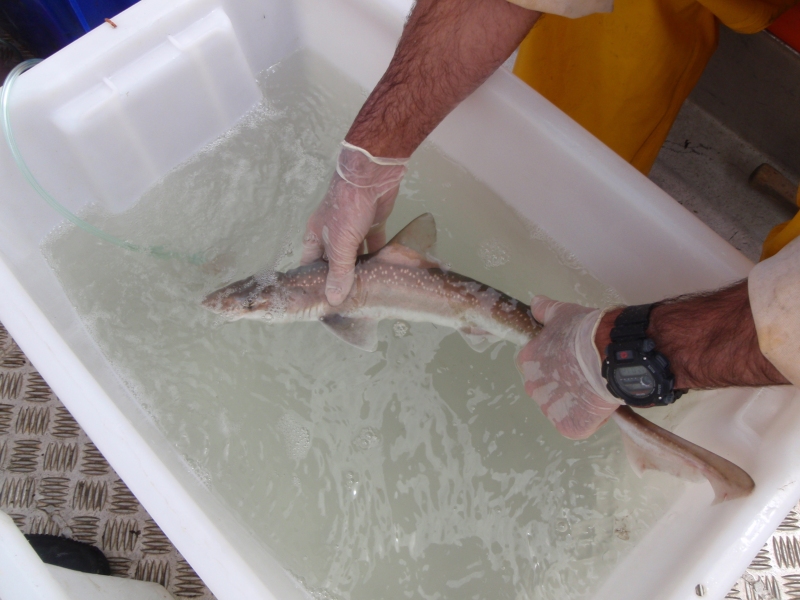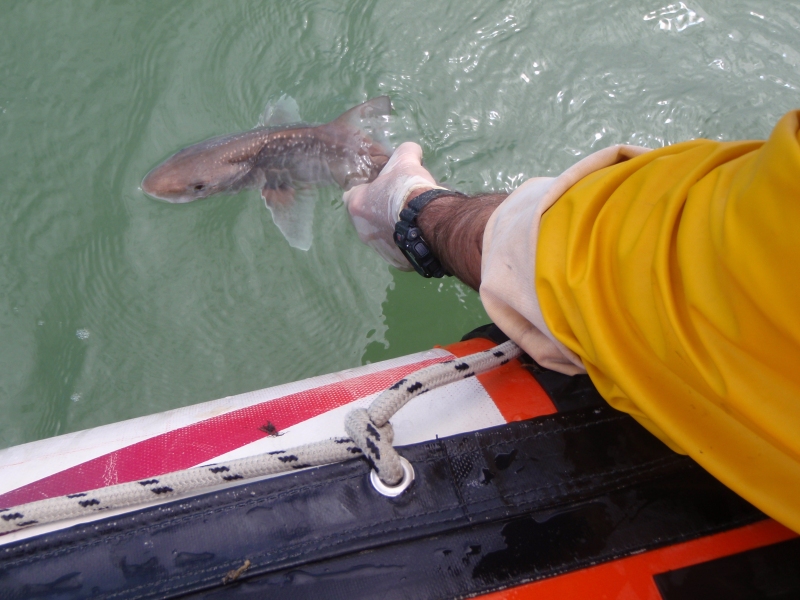Rig shark is an important inshore commercial fish species in New Zealand, and we need to understand more about their habitats, movements, nursery grounds and vulnerability to human impacts to ensure they are managed sustainably and their productivity is enhanced.
Overview
Rig, also known as 'lemon fish' and spotted dogfish, are small sharks found in coastal waters all around New Zealand. They are bronze or grey above, with a white belly and small white spots on their upper body and along the lateral line. They have flattened teeth arranged like paving stones to form grinding plates, and feed mainly on animals that burrow in the sea floor, especially crabs.
Rig are an important commercial fish in New Zealand, taken mainly by set net and bottom trawl. They are found in estuaries and coastal waters, and live near the sea floor. There are five managed stocks of rig around mainland New Zealand but the relationship between the adult populations and their nurseries is poorly understood. This makes it difficult for the fisheries to be managed optimally.
See Ministry of Fisheries page on rig management
Adult female rig migrate into shallow coastal waters in spring–summer to give birth to live young and then mate with males before departing for deeper waters. The new-born juveniles remain in the nurseries for about six months, where they presumably benefit from rich food resources and a refuge from predators. Currently, we don't know which estuaries are most important to them, and whether they inhabit entire estuaries or just portions of estuaries. We also need to know what risks they face from human activities and stressors such as habitat loss (through reclamation and building structures such as marinas), heavy metal pollution, fishing, dredging, and sedimentation.
Approach
As part of a project for the Ministry of Agriculture and Forestry (MAF), scientists from NIWA reviewed existing published and unpublished information on the geographic location of juvenile rig to identify potential nursery grounds. We then conducted a nationwide set net survey of 13 major harbours and estuaries across New Zealand in February–March 2011.
The study's aim was to identify and rank rig nursery areas, thus improving our knowledge of how the nurseries contribute to the adult populations found in more open coastal waters. This improved understanding will contribute to the sustainable management of the fisheries.
Survey methods
Six nets were set on each of two consecutive days per harbour, giving a total of 12 nets per harbour. Nets were 60 m long, had stretched mesh size of 3 inches (76 mm), and were anchored at each end with a 12–15 kg piece of iron railway line. The target depth range for the stations was 1.5–3.0 m at low tide, and nets were set between mid-morning and mid-afternoon (i.e. 1000–1600 hrs). We recorded depth, temperature, salinity, pH, and turbidity at each station.
Survey locations
The following thirteen estuaries and harbours around New Zealand were surveyed:
- Kaipara Harbour (Arapaoa River)
- Kaipara Harbour (Oruawharo River)
- Manukau Harbour
- Upper Waitemata Harbour
- Tamaki Estuary
- Raglan Harbour
- Tauranga Harbour
- Porirua Harbour
- Whanganui (Westhaven)
- Farewell Spit/Golden Bay
- Waimea/Mapua, Nelson
- Pelorus and Kenepuru Sounds
- Otago Harbour
MAF and NIWA identified these estuaries and harbours as being potentially important rig nurseries based on earlier studies and data.
Outcome
During the survey, Kaipara and Raglan harbours produced large numbers of juvenile rig, and Waitemata, Tamaki and Porirua harbours also produced moderate catches. Other harbours, particularly those in the South Island, produced only small numbers of juvenile rig. Our results were generally consistent with those reported in previous studies. Rig abundance may be greatest over muddy seabed in the turbid parts of harbours that have a significant freshwater intrusion component.
We were not able to define specific nursery areas within harbours, rather rig seem to inhabit large parts of suitable harbours. Using the combined results from the literature review and the nationwide survey, harbours were classified based on their perceived value as rig nurseries: very high value – Kaipara and Raglan harbours; high value – Waitemata, Tamaki, Manukau, Tauranga and Porirua harbours; low–moderate value – Waikare Inlet, Firth of Thames and inner Hauraki Gulf, Kawhia and Aotea harbours, Marlborough Sounds, Lyttelton, Akaroa and Otago harbours, outer Blueskin Bay; no or unknown value – Parengarenga Harbour, Ahuriri Estuary, Farewell Spit/Golden Bay, Whanganui Inlet, Nelson, Avon-Heathcote Estuary, Waitati Inlet (inner Blueskin Bay), Southland harbours.
There is no good evidence that any of the South Island harbours are important rig nurseries and it is not known where juveniles found around the South Island come from. Bays around the southern South Island, surf beaches, and open coastlines less than 10 m deep warrant further study to determine if they are functioning as South Island nurseries. Genetic studies have provided no evidence that more than one biological stock of rig occurs in mainland New Zealand, so an alternative hypothesis is that South Island juveniles migrate south from the main North Island nurseries during their first few years of life.
During the nationwide survey, snapper and grey mullet were important bycatch in North Island estuaries, and were most abundant in the same harbours as juvenile rig were. Snapper and grey mullet were also commonly caught in most other North Island harbours, and snapper were occasionally to commonly caught in the northern South Island harbours. West coast North Island harbours are clearly important habitat for 2+ (years) and 3+ juvenile snapper. Grey mullet were mainly subadults and adults, and were about the same size as fish caught commercially by set net and ring net. Kahawai were abundant in Farewell Spit/Golden Bay and Whanganui Inlet and school shark were abundant at the former. For both these species a range of juvenile age classes were caught indicating that harbours are important for older juveniles.
Estuaries are under threat from a number of causes: this information will be considered in fisheries management but also communicated to Regional Councils who control land-use and discharges likely to affect estuarine inhabitants.
Project code: ENV201005
Title: Habitats of particular significance for fisheries management: shark nursery areas
External people involved: Christy Getzlaff, Mikaera Miru.

